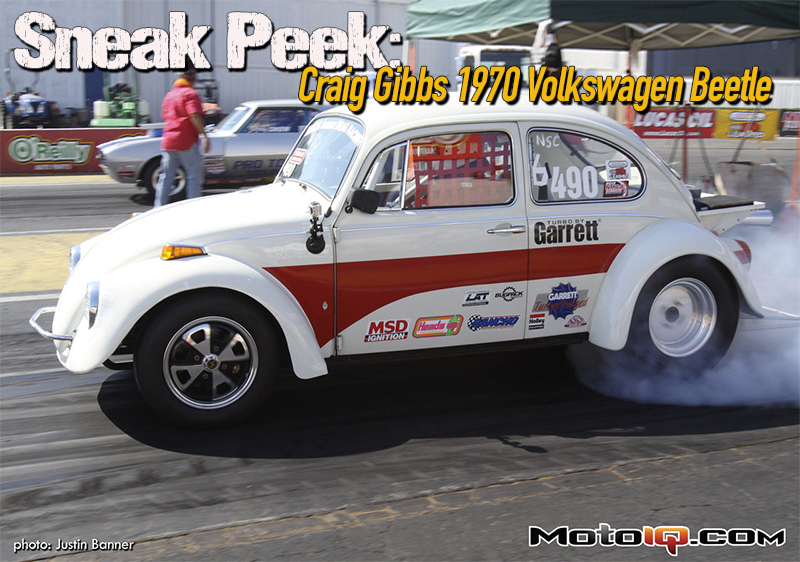,
 |
| The final parts of the equation in the ignition system are the MSD cap, rotor, and 8.5mm wires. These parts ensure the whole 44,000 volts reach the spark plugs with minimal voltage drop. |
 |
| Unlike a water-cooled car, an air-cooled car has only two ways to cool its engine; either its oil or its fuel. Well, you can't send too much fuel down the engine or we will flood or foul the spark plugs. So what do you do? You cool the oil! Bugs came with an auxiliary oil cooler from the factory, but now Craig is pushing more air into the engine, creating more heat. So, a larger aftermarket cooler was sourced to do the job. |
 |
| Positive crank case gasses are also vented through this JAZ swirl pot. This will ensure that the gasses are vented, but the oil is left. One other way to cool a bug is by blowing air onto the crankcase and heads by enclosing it all by a shroud. This is a factory style shroud that has been chromed. It has also been reconfigured from the factory generator charging system to an alternator charging system. A generator only gives a charge to the battery while an alternator will not only produce a higher output and stable power, but also will power the rest of the car where the battery normally has to. |
 |
| Unfortunately, you can't slap a turbocharger on a 1500 cc or 1600 cc Bug and call it a day. Well, you could, but your results probably won't last a long time or produce a much better result. The engine must be built to withstand 21 psi ever so often and 7 psi daily. While the Bugpack Valve Covers give a little hint to the package, you haven't seen it yet. |
 |
You need more and you start with an EMPI Aluminum case that has been designed for longer stroke and bigger bores. In the Bug world, you almost can't do better than EMPI. They are the Granddaddy of Bug Performance and are still around today making cases, carburetors, spindles, wheels, and a whole slew of aftermarket OEM and Performance parts for Bugs. This particular case is designed to use an 82 mm stroke crank and 94 mm pistons resulting in 2,276 cc of turbocharged displacement at 8.5:1 compression. To compare, the OEM 1500 cc engine was an 83 mm bore, 69 mm stroke, and 7.5:1 compression ratio for a mere 54 Horsepower. To achieve that displacement, Craig uses a SCAT Crank and Eagle H-Beam Rods with Cima Shelf Cast Pistons. The pistons run a Cima top ring, Total Seal Second Ring, and Cima oil control ring. The heads are a Superflow brand big valve, with 48 mm intake and 40 mm exhaust. The camshaft is based on the Engle for high lift and high duration for 5,000-8,000 RPM operation. The engine oil sump has also been modified for a greater 7 quart Capacity. |
 |
Here is some VW knowledge you may want to keep if you plan on putting some power to your bug. Buy a Volkswagen Bus transaxle, it can take more punishment than the standard transmission. Craig went one further and had it built by Rancho to further improve the Bus trans to take the beating it gets from drag racing and the turbocharged engine. It even has extra ribs welded on to the transmission case from being split a year ago. A Berg nose cone on the transmission allows for it to be used in the stock location and use the stock linkages. The Bus transaxle also uses Summer Brothers axles, type 3 end bearings and drum brakes. Now, even in VW Drag Racing, it is very unusual to see an independent axle bug going drag racing. The Swing Axle is usually preferred as it is stronger and simpler. However, Summer Brothers has built Craig a very strong axle and I don't think it will break first. I don't think the clutch assembly will either, being as it consists of a Kennedy Pressure Plate, Black Magic Iron Disk, and a lightened OEM Flywheel. |



